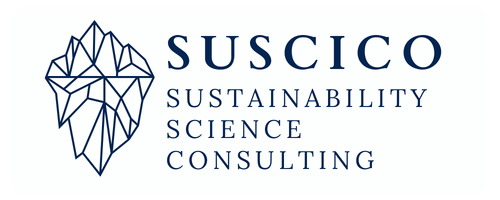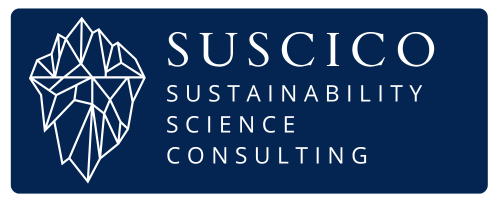FAQ
What is the difference between CSR and ESG?
Corporate Social Responsibility (CSR) focuses on a company’s voluntary initiatives to positively impact society and the environment, often through philanthropy or community projects. Environmental, Social, and Governance (ESG) is a broader framework that evaluates a company’s performance in managing environmental impacts, social responsibility, and governance practices, integrating these factors into core business operations and decision-making.
Example:
A CSR activity might involve donating to a local charity, while an ESG initiative would include setting measurable goals to reduce carbon emissions or improving supply chain transparency to meet stakeholder expectations.
A materiality assessment identifies the ESG topics most relevant to a company’s operations and stakeholder interests. It ensures that sustainability efforts are focused on areas with the greatest impact and importance to both the business and its stakeholders.
Example:
For a recycling company, material topics might include waste reduction, energy efficiency, and compliance with environmental regulations.
A company can measure its carbon footprint by conducting a Greenhouse Gas (GHG) inventory following recognized frameworks like the GHG Protocol or ISO 14064. This involves identifying and quantifying emissions across three scopes: Scope 1 (direct emissions), Scope 2 (indirect emissions from energy use), and Scope 3 (indirect emissions throughout the value chain).
Example:
A logistics company might measure Scope 1 emissions from fuel burned by its fleet, Scope 2 emissions from electricity used in warehouses, and Scope 3 emissions from outsourced transportation and supply chain activities.
Greenhouse gas emissions are categorized into three scopes:
- Scope 1: Direct emissions from sources owned or controlled by the company, such as fuel combustion in vehicles or boilers.
- Scope 2: Indirect emissions from purchased energy, like electricity, steam, or heating consumed by the company.
- Scope 3: All other indirect emissions throughout the value chain, including activities such as purchased goods, waste disposal, business travel, and employee commuting.
Example:
A food manufacturer’s Scope 1 emissions include fuel used in delivery trucks, Scope 2 covers electricity used in processing plants, and Scope 3 includes emissions from growing raw ingredients and product transportation by third parties.
Scope 3 emissions are challenging to measure because they involve indirect activities across an organization’s value chain, often requiring data from external suppliers, partners, and customers. These emissions span diverse categories, such as purchased goods, waste management, and product use, making data collection complex and less standardized.
However, Scope 3 emissions are often the largest portion of a company’s carbon footprint, representing significant environmental impact. Addressing them demonstrates a comprehensive approach to sustainability, aligns with stakeholder expectations, and helps reduce risks associated with supply chain disruptions and evolving regulations.
Example:
A fashion brand’s Scope 3 emissions include fabric production by suppliers and transportation of finished goods. Although hard to quantify, tackling these emissions improves supply chain sustainability and meets consumer demand for ethical practices.
A Product Carbon Footprint (PCF) assessment measures the total greenhouse gas emissions generated throughout a product’s lifecycle. This includes all stages, from raw material extraction and manufacturing to distribution, use, and disposal. It helps companies identify emission hotspots, improve sustainability, and communicate environmental impacts transparently to stakeholders.
Example:
For an aluminum can, a PCF assessment would quantify emissions from mining bauxite, processing aluminum, manufacturing the can, transporting it, and recycling it after use.
A Product Carbon Footprint (PCF) assessment helps manufacturers quantify and compare the environmental impact of products, enabling informed decisions to reduce emissions and enhance sustainability. For example, producing aluminum from recycled materials generates significantly lower emissions compared to using virgin raw materials. Recycled aluminum can reduce energy use by up to 95%, lowering the carbon footprint of the final product.
Example:
A beverage manufacturer using recycled aluminum for cans can demonstrate a smaller carbon footprint, appeal to eco-conscious consumers, and meet regulatory or stakeholder demands for sustainable products. This not only reduces environmental impact but also strengthens the brand’s market position.
Businesses can engage employees by fostering awareness, providing education, and creating opportunities for active participation in sustainability efforts. This includes conducting training programs on ESG principles, setting up green teams, and incentivizing eco-friendly behaviors like reducing energy use or adopting sustainable commuting options. Encouraging employee feedback and recognizing contributions to sustainability goals also build engagement and a sense of ownership.
Example:
A company might launch a program where employees contribute to reducing office energy consumption or participate in recycling drives, linking their efforts to broader corporate sustainability goals.
Green procurement is the practice of sourcing goods and services that have minimal environmental impact throughout their lifecycle. It prioritizes suppliers and products that meet sustainability criteria, such as energy efficiency, reduced packaging, and ethical production practices.
Why it’s important:
Green procurement helps your company reduce its carbon footprint, improve supply chain sustainability, and align with stakeholder expectations. It can also lead to cost savings through resource efficiency and position your company as a responsible, forward-thinking business in a competitive market.
Example:
Switching to suppliers who provide recycled materials or energy-efficient equipment not only reduces emissions but also enhances your company’s ESG performance, benefiting both the environment and your brand reputation.
Environmental Risk Management:
Environmental risk management involves identifying, evaluating, and addressing risks related to environmental factors, such as climate change, resource depletion, and pollution. It helps businesses safeguard operations, comply with regulations, and meet stakeholder expectations while ensuring resilience against environmental challenges.
TCFD (Task Force on Climate-related Financial Disclosures):
The TCFD provides a framework for companies to disclose financial risks and opportunities related to climate change. It focuses on governance, strategy, risk management, and metrics to help investors understand a company’s preparedness for climate risks.
IFRS (International Financial Reporting Standards):
IFRS is a set of international accounting standards ensuring consistency and transparency in financial reporting. IFRS S1 and S2, specifically, focus on sustainability and climate-related disclosures, aligning with TCFD recommendations to incorporate climate risks into financial statements.
Example:
A company uses environmental risk management to assess the impact of extreme weather on its supply chain, TCFD to disclose these risks in climate reports, and IFRS S2 to integrate them into financial reporting, ensuring transparency and preparedness.
While SMEs may not be legally required to implement sustainable development practices, adopting them offers significant advantages. Many large corporations now prioritize suppliers with strong ESG credentials to meet their own sustainability goals, meaning sustainable practices can secure your place in supply chains. Additionally, sustainability improves competitiveness by aligning with customer expectations and market trends, and it enhances your access to investments, as more financiers and investors favor businesses committed to ESG principles.
HOW CAN WE
HELP YOU?
Ready to align profitability with impactful ESG strategies? Contact us today to discuss how we can help your business thrive sustainably.

